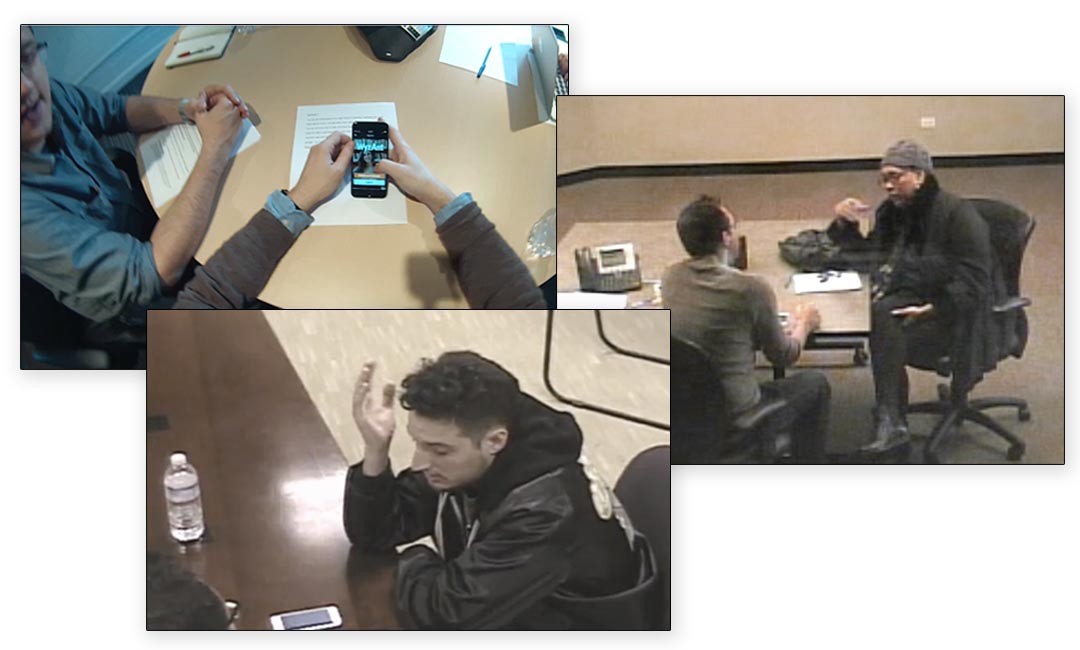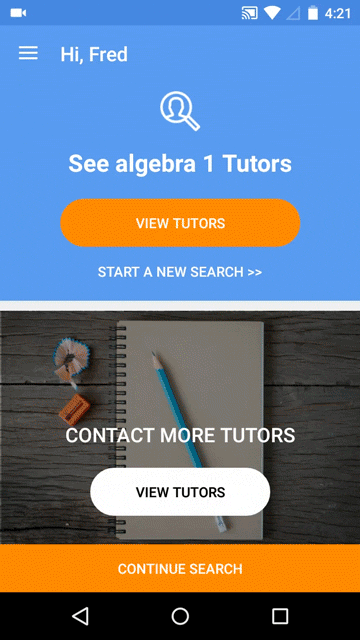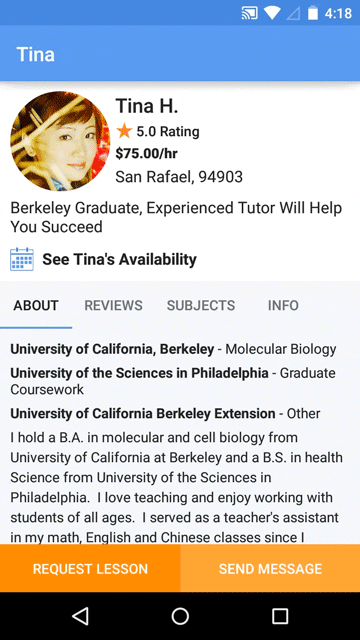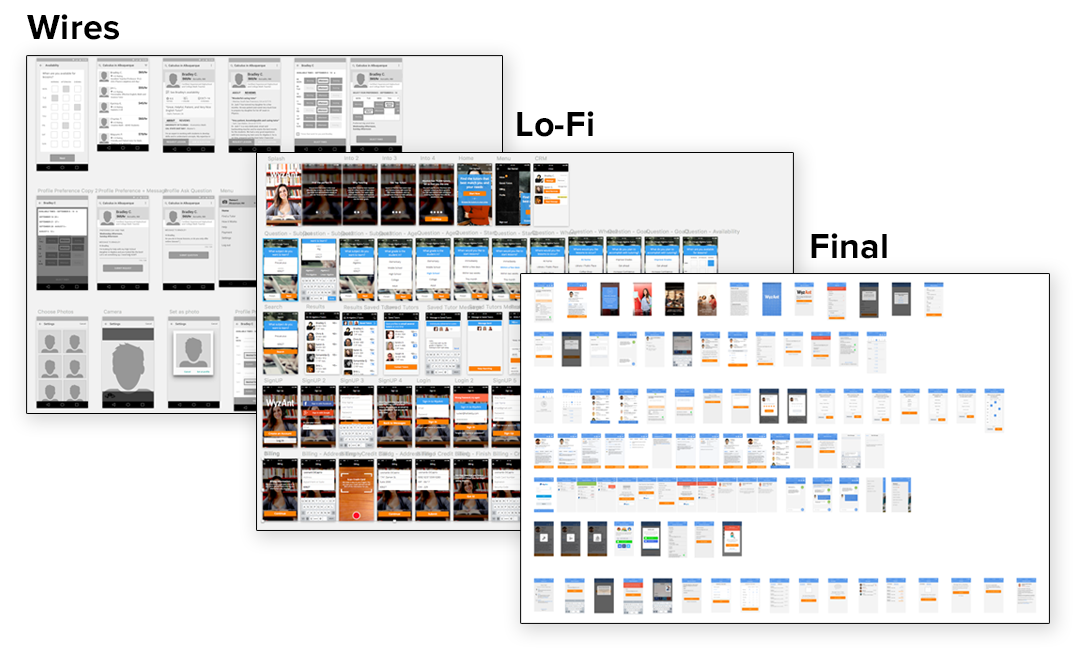WyzAnt Mobile App for Student & Parents
Within the many responsibilities I had at WyzAnt, my core function was still that of a Mobile Designer. In addition to managing a team and creating a unified brand experience, I was also working toward bringing a web only company into the current competitive marketplace of having a mobile channel both iOS and Android platforms. Working closing with product managers, engineers, and executives I was able to successfully build out apps for both tutors and students that had immense success in meeting our goals and modernizing our product offering.
Previously, WyzAnt had limited success with their mobile web experience, mostly just a responsive version of the desktop site, with no optimization for mobile experience. Creating an app was seen not only as a competitive tool, but a necessary channel as more and more traffic was cannibalized and subsequently bouncing from a poor functioning mobile web. Working with the Director of Product, we interviewed several tutors about how their first contact with prospective students and parents usually progressed. After a few interviews we started seeing a strong pattern of what pain points there were, what information was consistently addressed, and how long the process would take. Coupled with interviews with parents and students, we were able to start making some solid hypothesis on what next steps could be.

Together we mapped out what the ideal experience would be for a variety of potential students and parents looking for a tutor or even just looking for help for their specific problems. We identified a number of use cases and potential routes we could take, but a many would be entirely new features or products outside of the main scope we were tasked to find. We ended on creating a simplified version of the core product at WyzAnt, but identified a few key components that needed a dramatic change in the platform to ensure mobile success, mostly around messaging and scheduling.

How messaging worked originally at WyzAnt was similar to how craigslist worked, students would reach out to a Tutor and all future communication would be then be taken entirely outside of our platform. The way first few emails between students and parents averaged around 8 rounds before the first lesson would take place, much of the content centered around scheduling, credentials, and setting expectations and goals. Once the lesson was over, most tutors and students moved their relationship to text messaging. We found that to make Mobile successful as a communication tool, it would need messages that are short, instant, and direct.
This key insight to we found was that not only were our customers using two different forms of communication off platform, but that they almost all consistently gravitated toward the phone as the preferred method of future messaging. This meant we needed to drastically change our backend to support a simplified, and on platform communication tool similar to most messaging apps to expedite and maintain communication on platform. This would provide better transparency, better communication, keep association with brand, and increase potential of the LTV (life time value) of the students would use our platform to reach out to more tutors for other subjects.

A large part of past emails between tutors and students was going over their credentials, and trying to arrange a time that worked on both ends. Having spent some time working on the desktop and mobile web side of the site, I knew that the credentials were listed on a tutor’s profile, though not as well as they could be, but scheduling was a larger issue. Digging in deeper, we found that many of the tutors that came up first in our search results were also usually the most busy because of how well they performed in our algorithm. The best qualified tutors were rejecting or not even responding to the majority of requests simply because they were too busy. This second insight led to another fundamental change we had to make in our platform, to ability to collect scheduling data for tutor, and then promote availability to prospective students in need. This would require some heavy lifting on our backend and desktop engineering teams to build this system, but also start dragging the information out of the tutors, and changing our algorithm to get actual best results to students.

Actual development of the app was a lengthy process, not only were we creating new and optimized experiences outside of the comfort zone for a 10 year old company, but we also had to create it for both Android and iOS, and create APIs that didn’t exist for features that were not built yet. Getting the right experience out instead of simply a smaller version of the website was the main goal that I was focused on. I had the time to run several usability tests with a variety of students and parents who had different situations and goals. I went through a number of prototypes hitting at varying degrees of comfort with the product, ease of use, and recording reactions to how the app functioned in relation to their expectations. During this time were were able to simplify scheduling, validate messaging as a success, and hone in on where we could optimize the experience for account and profile setup.

The key learnings and takeaways from developing the student and parent search app for WyzAnt were that by truly embracing a mobile first stance in a business, whether established or boot strapped startup, one can take the opportunities to learn from their users in the mobile channel that is rapidly becoming the first choice in today’s market. We were able to rebuild the experience for both sides of our marketplace by researching and listening to the pain points experienced by our customers and develop an experience that satisfied goals of continuing to teach and learn.

